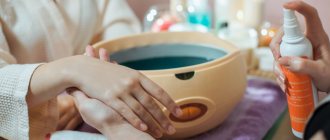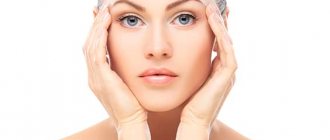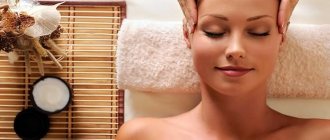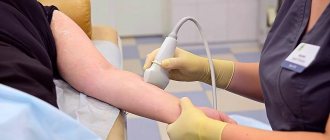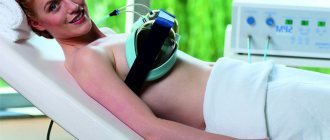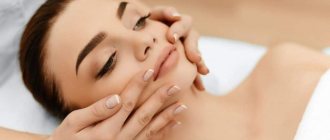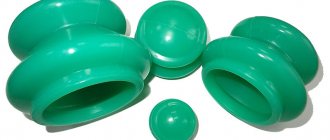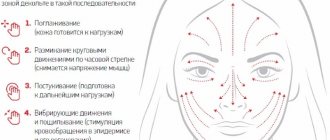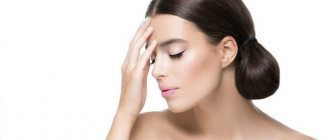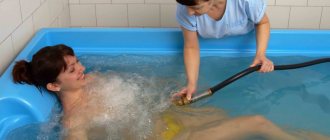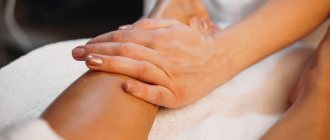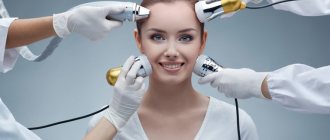Ayurvedic massage is a popular technique that originated in India but has spread throughout the world. The basic law of Ayurveda is that it considers the human body as a single system. Therefore, the massage effect is aimed at biologically active points and energy flows.
Ayurvedic massage is considered an effective healing procedure
Features of Ayurvedic massage
Ayurvedic massage - what is it? This technique is not just aimed at relaxation, but is actively used for medicinal purposes. This can affect the entire body or its individual parts. There are special methods for the legs or head. The specialist can also work on the abdomen or spine. The choice of a specific option depends on the goal.
Women often resort to this type of treatment to rejuvenate and relieve stress. With its help, it is possible to improve the condition of the skin and cope with cellulite. Men are attracted to Ayurveda massage by the opportunity to relax, work deep muscles and improve the health of the body.
Important! Inexpensive massage courses last only a few months. In India, Ayurveda doctors undergo training for 6 years and at the same time receive medical education.
Preparation
Traditionally, Ayurvedic massage is performed in the morning or evening hours. The patient should come to the session with an empty stomach so that the internal organs are not “distracted” by digesting food. While working, the master constantly adds new portions of oil so that his hands glide gently over the skin without causing discomfort. After the session you will need to take a shower and rest for at least fifteen minutes.
During the course, it is recommended to follow a gentle diet. If possible, you should give up meat dishes, fast food, alcohol and coffee. Fresh fruits, juices, cereals and plenty of clean water are needed. The ideal option is to set aside a few free days for the Ayurvedic massage course without excessive physical and mental stress, or go to a specialized clinic.
Purpose of Ayurvedic massage
Many people are interested in what Ayurveda massage is. An important concept of this science is achieving balance in the human body. This means that it helps restore balance, get rid of bad thoughts, and remove toxins and waste.
Indian full body massage is aimed not only at physical, but also at spiritual healing. Therefore, it can be compared to psychotherapy.
The main benefits of Vedic massage, as it is sometimes mistakenly called, include the following:
pros
eliminating tension;
activation of the synthesis of happiness hormones;
eliminating muscle tension; normalization of blood flow and lymphatic drainage;
restoration of normal breathing and heart rhythm;
strengthening the immune system;
improvement of mental functions.
Minuses
not detected
Efficiency of the procedure
Thanks to kneading according to the Indian method, the skin regains its elasticity, firmness, and wrinkles are smoothed out. The dermis in the affected area becomes toned. Stimulation of blood circulation is achieved. Lymphatic drainage is normalized. During the kneading process, the muscles warm up.
Facial muscles are tightened and wrinkles are smoothed out. The complexion is stabilized: the unnatural grayness goes away and a blush appears. Dark areas under the eyes disappear. The contours are tightened. The effect reduces swelling in the facial area.
Taking into account the normalization of internal processes, the normal functioning of the body becomes established: toxins are removed, the amount of vital energy increases. Appearance improves by stabilizing the functioning of many body systems.
Advantages and disadvantages
Indian oil massage has a beneficial effect on a person's psychological state. With this procedure, it is possible to restore blood flow, strengthen the immune system, prevent digestive problems, and eliminate the symptoms of certain pathologies.
The main advantages of the procedure include the following:
- double effect - the skin is exposed to the massage therapist’s fingers and aromatic oils;
- ease of implementation - anyone can learn the technique;
- minimum contraindications.
Note! The procedure has virtually no downsides. The only drawback is the impossibility of using this technique for wounds, scratches or other damage to the skin.
The Abhyanga procedure is performed by 2 massage therapists at once
Selection of oils
A correctly selected phytocomposition significantly affects the result of a course of procedures. Fatty oils obtained from edible plants are used as a base. Everyone has their advantages. When choosing products for massage, you should focus on those:
- are of natural origin;
- suitable for this skin type;
- do not cause allergies;
- have a suitable (not too liquid or viscous) consistency;
- combine with each other (if we are talking about composition).
Olive oil
Has a beneficial effect on dry and normal skin. It is rich in vitamins A, C and E and microelements, relieves irritation, nourishes, and gives elasticity.
Sesame
Suitable for oily skin. Linoleic acid in its composition triggers tissue regeneration processes. This oil helps cleanse and nourish the skin of the face and body. It has a viscous consistency and is often used in mixtures.
Coconut
Suitable for all skin types, it moisturizes, softens and protects the skin, helps get rid of flaking and heals minor damage. Provides good glide, which is especially important when massaging the body.
Cacao butter
It differs in that it is hard at room temperature and softens upon contact with hands and body. Rich in fatty acids and glycerin essential oils. It contains a complex of vitamins, microelements, and caffeine. Helps moisturize and restore tissue, activate collagen production, and form a protective layer of skin. The oil is hypoallergenic, has a pleasant chocolate scent, and is especially recommended for dry and sensitive skin. It is used in spa salons for body wraps.
Apricot
Great for sensitive and aging skin. It goes well with peach and is used as a base for an anti-cellulite mixture.
Grape seed oil
Promotes tissue renewal and rejuvenation, thanks to a high concentration of vitamin E. Light consistency makes it suitable for the care of oily, combination and normal skin. It does not clog pores and regulates the secretion of the sebaceous glands. Often used in combination with almond and jojoba oils, it serves as the basis for essential compositions.
Peach
Used for dry and thinned aging skin. It has a thick consistency, nourishes and restores tissue.
Almond
Used for different skin types, including mature ones. It is easily absorbed, saturates tissues with useful substances, and is effective in the fight against expression wrinkles.
The above oils are base oils. They can be used alone or in combination. Often, to achieve a more significant therapeutic or anti-cellulite effect, a few drops (usually in a ratio of 1:20) of essential oils are added.
So, to recover from stress and depression, a mint or tangerine composition is suitable. Lavender and geranium will help cope with insomnia.
Essential vapors help to quickly get rid of the consequences of pulmonary diseases such as bronchitis, tracheitis, pneumonia. Compositions of eucalyptus oil, patchouli, cypress, orange, bergamot, anise, and thyme are often used in combination with percussion massage.
Massage compositions containing extracts of ylang-ylang, rosemary, and tea tree help solve specific problems with oily facial skin, which often bother young girls. Active components regulate the functioning of the sebaceous glands, preventing the appearance of acne.
Helps accelerate metabolic processes in adipose tissue and combat the effect of orange peel oils of cinnamon, cloves, lemon, grapefruit, juniper, rosemary, black cumin.
Essential oils contain active substances in high concentration. They are not applied directly to the skin, but added to the foundation.
You can buy the ingredients in pharmacies, specialty stores and even supermarkets (olive, corn, sunflower, flaxseed). There are brands, such as Weleda, under which not only pure oils are sold, but also ready-made mixtures.
Techniques and rules for performing massage according to Ayurveda
Standard Western massage involves performing movements from the periphery to the central part. The Ayurvedic procedure can also be carried out in the opposite direction. The specific set of movements depends on the goals and indications.
Common techniques for this type of influence include the following:
- Water lily leaf - in this case, the oil should be distributed over the skin with light movements.
- Crescent - in this case you need to perform semicircular movements around the body. This is done exclusively with your fingers.
- Wave - involves performing long, smooth strokes. In this case, you need to work on your back and stomach.
- Peacock - to use this technique, you need to spread your fingers wide and move them over the stomach, buttocks and joints.
When performing an Ayurvedic head massage, you need to move starting from the crown. The neck must be treated very carefully, since there are many vessels there.
Important! Massaging the groin and mammary glands is prohibited. When treating the collar area, there is a possibility of increased pressure.
Types of Ayurvedic massage
Today there are many effective types of Ayurvedic massage. Each of them has certain characteristics.
After a course of massage, you cannot help but notice the results:
| Before | After |
Abhyanga, Ayurvedic oil massage
This procedure must be performed every day. A distinctive feature of Abhyanga is that the session is performed by two massage therapists. This helps slow down aging and start the rejuvenation process.
"Marma", Ayurvedic oil massage
This is one of the oldest techniques. It is aimed at processing energy accumulation points. The technique is often used for Indian facial massage, which has many active points.
“Udvarthana”, Ayurvedic anti-cellulite powder massage
This is a fairly intensive procedure that helps to shape your figure and get rid of excess weight. It helps restore metabolism and eliminate toxins.
“Shiroabhyanga”, Ayurvedic massage of the head and collar area
This type of treatment involves treating active points of the neck and head. It helps stimulate blood circulation, cope with stress and fatigue.
“Mukhabhyanga”, Ayurvedic massage of face and neck
In this case, the body is cleansed with Indian rose water. During the procedure, the massage therapist applies a special cream that has restorative properties.
“Padabhyanga”, Ayurvedic leg and foot massage
During the procedure, the specialist acts on the marma points of the legs. This helps stimulate blood flow and combat fatigue and swelling.
Benefit
Even a small number of sessions of professionally performed Ayurvedic massage results in a significant improvement in health. It helps solve many health problems:
- restore physical and psychological strength;
- improve blood circulation, lymphatic drainage;
- solve the problem of cholesterol accumulation;
- ensure restful and deep sleep;
- relieve pain caused by osteochondrosis;
- prevent joint diseases;
- regulate blood pressure;
- relieve headaches;
- calm the nervous system.
Selection of medicinal oil for Ayurvedic massage
It is recommended to choose oil taking into account the human condition. Usually high-quality unrefined products are used. Formulations with medicinal plants can also be used.
For reference! Massage therapists often use sesame, olive, and castor oils. You can also use corn or coconut oil.
Unrefined oils are used for the procedure
Ayurvedic massage technique
Each type of procedure has certain characteristics. The area where the treatment will be carried out must be treated with oil. After which the massage therapist performs circular movements on the back. They should be directed counterclockwise.
Warm stones must be applied to individual areas. After completion, the treatment area should be treated with essential oil.
Stones can be used for the procedure
Self-massage according to Ayurveda - to do or not
Some types of Ayurvedic massage can be done independently. As an example of such an impact, it is worth citing Mukha Abhyanga. It provides pleasant sensations and relaxation. To do this, you need to pour a little oil on the crown of your head and rub it in a circular motion on your head. Finally, the oil must be removed with a towel. The duration of the procedure is 20 minutes.
Ayurvedic massage is considered an effective procedure that helps to heal the entire body. It is important to strictly adhere to the technique of its implementation.
Precautions, contraindications
Massage should not be performed if:
- Acute inflammatory diseases;
- Open wounds on the skin;
- The presence of malignant tumors;
- High body temperature.
Massage procedures are not recommended for women during menstruation, pregnancy and breastfeeding.
The massage therapist must perform all manipulations without intense impact on the skin. Excessive pressure can cause negative reactions in the body. If you are unsure of the correctness of your movements, do not perform the massage yourself.
